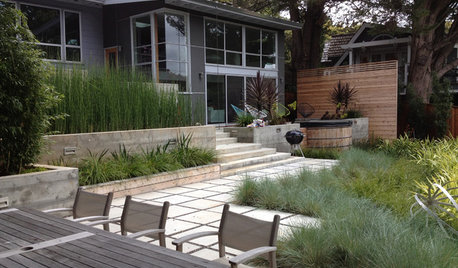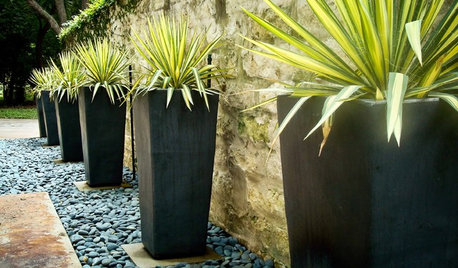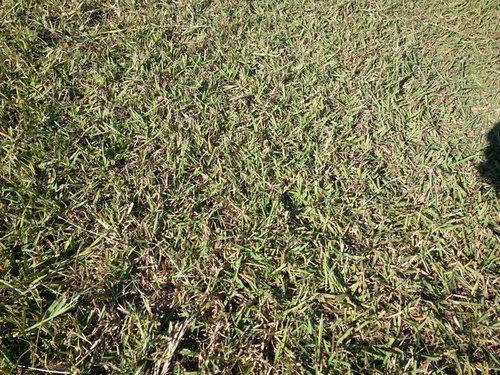Carpet Grass? I think.
ikelevi
9 years ago
Related Stories

GARDENING GUIDESNew Ways to Think About All That Mulch in the Garden
Before you go making a mountain out of a mulch hill, learn the facts about what your plants and soil really want
Full Story
INSPIRING GARDENSInside Houzz: A Waterfront Property Ditches the Grass for a Garden
New drought-tolerant plantings and outdoor gathering spaces help this California backyard take in the view without wasting space or water
Full Story
LANDSCAPE DESIGNIs It Time to Consider Fake Grass?
With more realistic-looking options than ever, synthetic turf can be a boon. Find the benefits and an installation how-to here
Full Story
DECORATING GUIDESGo for the Green: Artificial Grass Surprises, Inside and Out
Synthetic turf springs up on patios, living rooms, furniture and walls. Basement golf, anyone?
Full Story
GARDENING GUIDES5 Great Grasses for a New Lawn
Learn about maintenance, wear tolerance, ideal climate and more for these top turf choices to pick the right one for you
Full Story
PETSSo You're Thinking About Getting a Dog
Prepare yourself for the realities of training, cost and the impact that lovable pooch might have on your house
Full Story
LANDSCAPE DESIGNLet's Revisit Some Revolutionary Garden Thinking
One book changed the vision of postwar British garden design forever. See how it's influencing your garden today
Full Story
CONTAINER GARDENSWant Compelling Garden Minimalism? Think One Plant, One Pot
Highlight a show-worthy stunner or elevate a pedestrian plant by giving it a solo starring role in the garden
Full Story
SMALL KITCHENS10 Things You Didn't Think Would Fit in a Small Kitchen
Don't assume you have to do without those windows, that island, a home office space, your prized collections or an eat-in nook
Full Story
LIFEStop the Toy Takeover by Changing the Way You Think
Make over your approach and get gift givers onboard with your decluttering efforts by providing meaningful toy alternatives
Full StorySponsored
Your Industry Leading Flooring Refinishers & Installers in Columbus
More Discussions







dchall_san_antonio
ikeleviOriginal Author
Related Professionals
Erie Landscape Architects & Landscape Designers · Anderson Landscape Contractors · Commack Landscape Contractors · Dixon Landscape Contractors · Dudley Landscape Contractors · Los Banos Landscape Contractors · Louisville Landscape Contractors · Panama City Beach Landscape Contractors · Porterville Landscape Contractors · Severna Park Landscape Contractors · University City Landscape Contractors · Washington Landscape Contractors · Westford Landscape Contractors · Apple Valley Swimming Pool Builders · Golden Glades Swimming Pool BuildersikeleviOriginal Author
dchall_san_antonio
ikeleviOriginal Author
dchall_san_antonio
ikeleviOriginal Author
dchall_san_antonio
iriasj2009
ikeleviOriginal Author
ikeleviOriginal Author
ikeleviOriginal Author
ikeleviOriginal Author
dchall_san_antonio
ikeleviOriginal Author
iriasj2009
iriasj2009
dchall_san_antonio